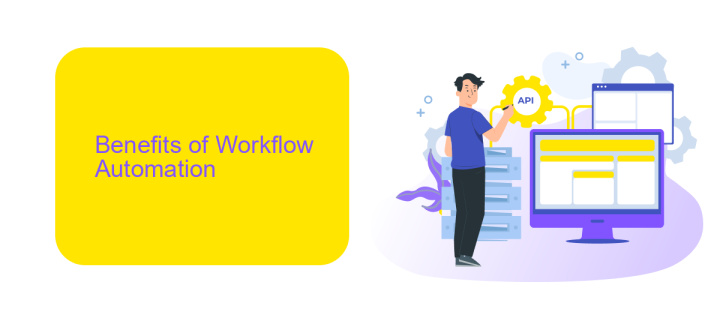Workflow Process Automation
In today's fast-paced business environment, workflow process automation has become essential for enhancing efficiency and productivity. By automating repetitive tasks, organizations can streamline operations, reduce human error, and free up valuable time for employees to focus on strategic initiatives. This article explores the benefits, key components, and implementation strategies of workflow process automation to help businesses stay competitive and agile.
Introduction to Workflow Process Automation
Workflow Process Automation (WPA) is a transformative approach that leverages technology to streamline and automate business processes, enhancing efficiency and reducing manual intervention. By implementing WPA, organizations can achieve higher productivity, minimize errors, and ensure consistent outcomes.
- Increased Efficiency: Automating repetitive tasks saves time and allows employees to focus on more strategic activities.
- Consistency: Automated workflows ensure that processes are carried out uniformly, reducing the risk of human error.
- Scalability: WPA solutions can easily scale with the growth of the organization, accommodating increased workloads without additional resources.
- Integration: Tools like ApiX-Drive facilitate seamless integration between various applications, ensuring smooth data flow across systems.
By adopting Workflow Process Automation, businesses can not only improve their operational efficiency but also gain a competitive edge in the market. Leveraging platforms such as ApiX-Drive enables organizations to integrate and automate workflows effortlessly, ensuring that all systems work harmoniously together. This holistic approach to automation is key to achieving long-term success and sustainability.
Benefits of Workflow Automation

Workflow automation significantly enhances operational efficiency by streamlining repetitive tasks and minimizing human error. This leads to faster turnaround times and allows employees to focus on more strategic activities, thereby increasing overall productivity. Automated workflows ensure consistency and accuracy, which is crucial for maintaining high standards and meeting compliance requirements. Additionally, they offer real-time tracking and reporting capabilities, enabling better decision-making and resource allocation.
Integrating various applications and services becomes seamless with workflow automation tools like ApiX-Drive. This platform facilitates the connection of multiple systems without the need for extensive coding knowledge, making it accessible for businesses of all sizes. ApiX-Drive supports a wide range of integrations, allowing for the smooth transfer of data between different platforms, which further optimizes processes and enhances the user experience. By leveraging such tools, organizations can achieve greater agility and adaptability in their operations.
Challenges of Workflow Automation Implementation

Implementing workflow automation can significantly enhance business efficiency, but it also presents several challenges that organizations must address to ensure a smooth transition. These challenges can range from technical issues to human factors, and overcoming them requires careful planning and execution.
- Integration Complexity: Integrating new automation tools with existing systems can be complex and time-consuming. Services like ApiX-Drive can simplify this process by providing seamless integration capabilities.
- Data Security: Ensuring data security during the automation process is crucial. Organizations must implement robust security measures to protect sensitive information.
- Employee Resistance: Employees may resist changes due to fear of job loss or unfamiliarity with new technologies. Proper training and communication are essential to mitigate this issue.
- Cost of Implementation: The initial cost of implementing workflow automation can be high. However, the long-term benefits often outweigh the initial investment.
- Maintenance and Updates: Regular maintenance and updates are necessary to keep the automation tools running smoothly and efficiently.
Addressing these challenges requires a strategic approach and the right tools. Leveraging services like ApiX-Drive for integration can streamline the process, while effective communication and training can help in gaining employee buy-in. By tackling these challenges head-on, organizations can successfully implement workflow automation and reap its benefits.
Best Practices for Successful Workflow Automation

Implementing workflow automation can significantly enhance efficiency and productivity within an organization. To ensure a successful transition, it is crucial to follow a few best practices. Firstly, clearly define your objectives and identify the processes that will benefit the most from automation.
Next, choose the right tools and platforms that align with your organization's needs. Opt for solutions that offer flexibility and scalability, such as ApiX-Drive, which facilitates seamless integration between various applications and services.
- Map out your existing workflows to identify bottlenecks and areas for improvement.
- Engage stakeholders and team members in the planning and implementation phases.
- Start with automating simple tasks before moving on to more complex processes.
- Continuously monitor and optimize your automated workflows for better performance.
By following these best practices, you can ensure a smooth and effective workflow automation process that maximizes your organization's potential. Regularly review and update your workflows to adapt to changing business needs and technological advancements.
Conclusion
In conclusion, workflow process automation significantly enhances operational efficiency by streamlining repetitive tasks and reducing the potential for human error. By implementing automated workflows, organizations can ensure consistency, improve productivity, and free up valuable human resources to focus on more strategic activities. The integration of automation tools into existing systems allows for seamless data flow and improved decision-making processes, ultimately contributing to the overall growth and success of the business.
Furthermore, services like ApiX-Drive facilitate the integration of various applications and services, making the automation process more accessible and effective. By leveraging such platforms, businesses can effortlessly connect different systems, enabling real-time data synchronization and enhanced operational capabilities. As technology continues to evolve, embracing workflow process automation will remain crucial for organizations aiming to stay competitive and agile in an ever-changing market landscape.
FAQ
What is Workflow Process Automation?
How can Workflow Process Automation benefit my business?
What types of tasks can be automated in a workflow?
Is Workflow Process Automation difficult to implement?
How do I get started with Workflow Process Automation?
Time is the most valuable resource for business today. Almost half of it is wasted on routine tasks. Your employees are constantly forced to perform monotonous tasks that are difficult to classify as important and specialized. You can leave everything as it is by hiring additional employees, or you can automate most of the business processes using the ApiX-Drive online connector to get rid of unnecessary time and money expenses once and for all. The choice is yours!

